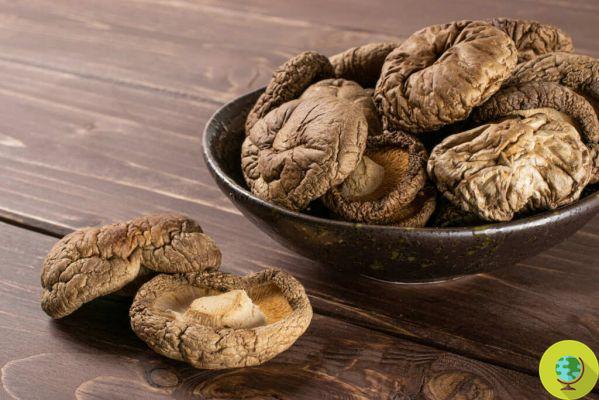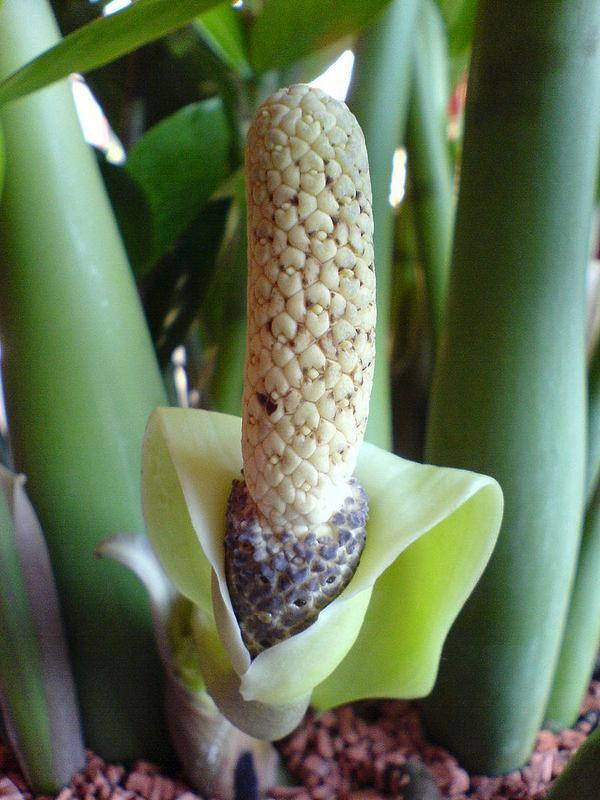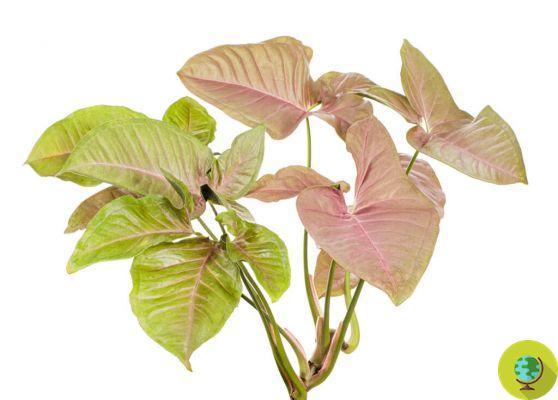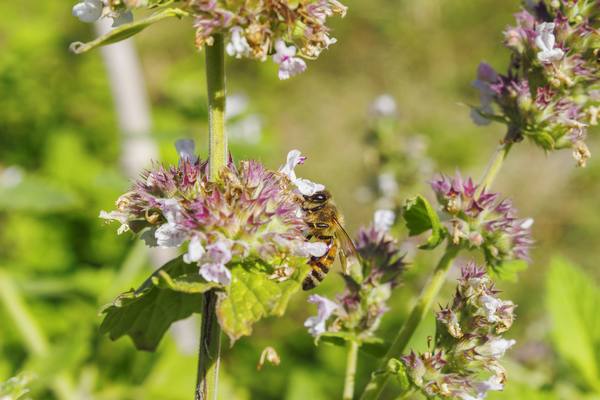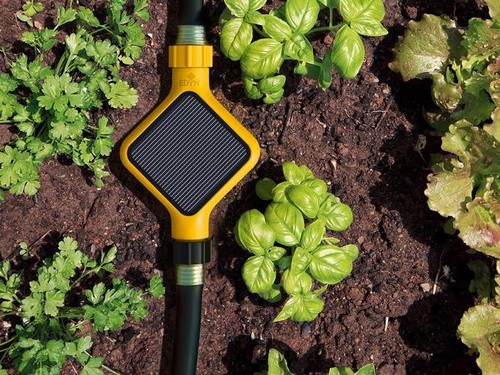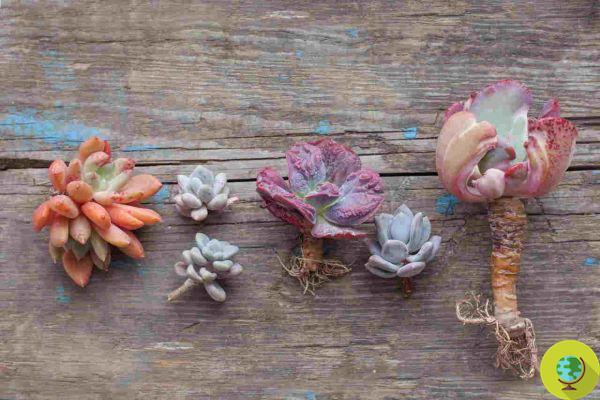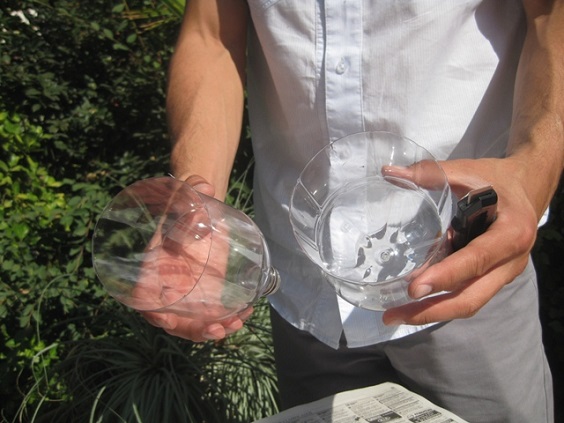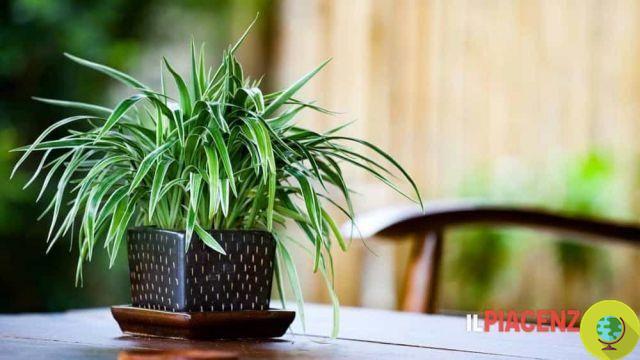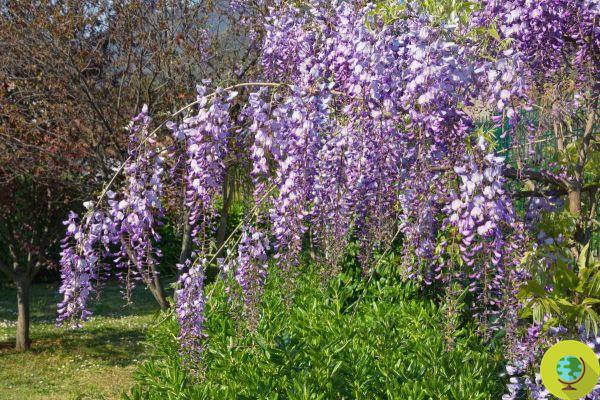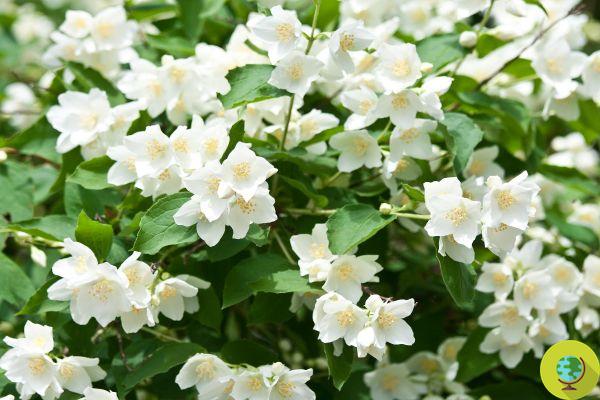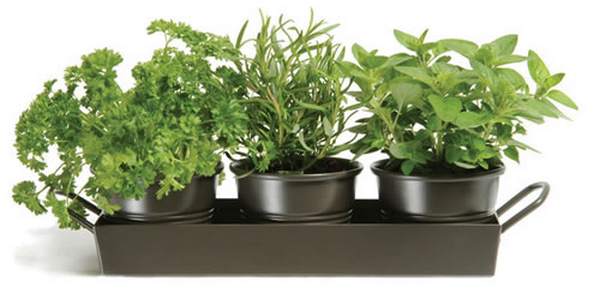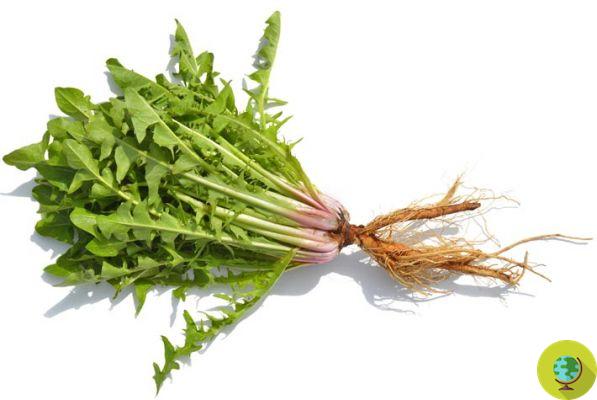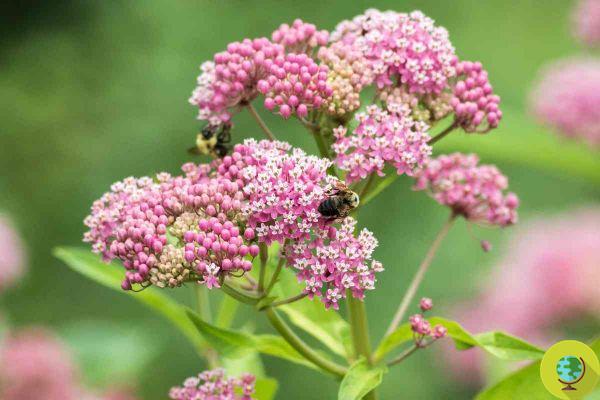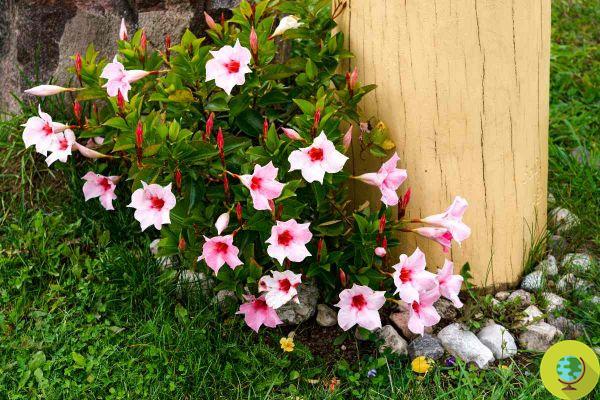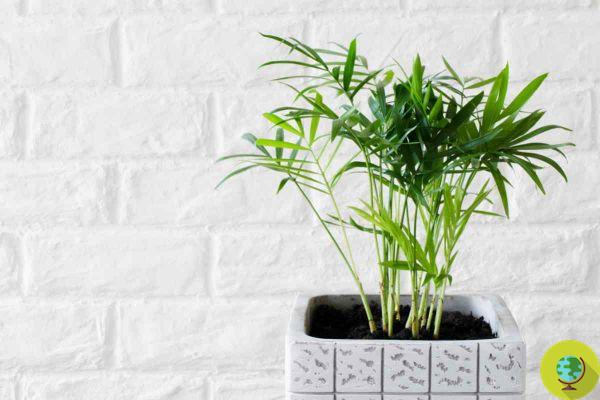All about begonia, one of the most popular plants: how to care, cultivate and when to plant the most common varieties, both in pots and in the garden
La begonia is a plant of tropical origin that belongs to the Begoniaceae family. It's a perennial plant often grown as an ornamental both in pots and in the garden depending on the variety. Those who love begonias appreciate both flowers and asymmetrical leaves
The Begoniaceae family includes over 1600 species and begonias differ from each other not only for the color of the flowers but also for the root typology which can be rhizomatose, tuberose or fascicolate.
All begonias have both male and female flowers that are recognized by slight differences. In particular, male flowers are usually more showy.
Index
Begonia, symbolism and meaning of flowers
The name begonia is dedicated to Michel Begon, governor of Santo Domingo who lived in the 17th century. Santo Domingo is the place of origin of the begonia. However, this flower is now grown all over the world and has a special meaning.
Begonia is a symbol of sympathy and cordiality. You can give it to a friend to express your appreciation for her. Also begonia is a suitable gift for the host because it is a symbol of gratitude for hospitality. In Latin American countries, begonia is a symbol of prosperity and wealth.
Finally, do not forget that begonia is fantastic for scenting rooms and that it is one of the most suitable plants for purifying the air in the home and office. (Read also: 15 Indoor plants that purify the air in your home
Characteristics and most common varieties of begonias
Most varieties are annuals with flowering times that vary according to the species. The most common and widespread types of begonia - wax and tuberose - bloom from early summer until the first frosts. Flowering times can also vary when grown indoors and last, for example, all year round. We can distinguish the many varieties of begonia - more than 100 species and over 10.000 types of cultivated mutations - in groups that share common characteristics of the various species.
Wax begonias (e.g. ever-flowering begonietta)
Le begonie waxes (Begonia semperflorens) are also known as begonietta, have succulent stems, glossy, rounded, green or reddish-brown leaves and grow into bushes. These shade-loving plants bring a splash of color when placed under trees, in perimeter pots, hanging baskets or balcony planters: the small, fleshy and colorful 4-petalled flowers are perfect for embellishing. Not surprisingly, these plants that can reach 25-40 cm in height, not particularly demanding and quickly ground cover, are used, in particular, for borders. The leaves are edible and can be eaten raw in salads, in France they are also used candied.
Begonie tuberose
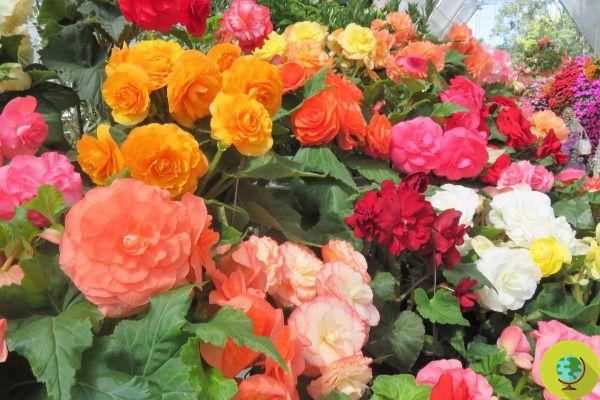
@Dorothy Chiron/Shutterstock
Tuberous begonias come in two forms, upright or creeping, and have green or burgundy leaves. Their single, double or ruffled flowers bloom in shades of pink, yellow, orange, red or white. Tuberous begonias have spectacular colorful flowers and are especially showy when placed in hanging baskets or containers. Compared to wax begonias, the tuberous begonia plant grows more, reaching up to 45 centimeters in height when grown indoors and up to over 90 centimeters if placed on the ground in the garden.
Begonie bambusiforme (are Begonia Spotted)
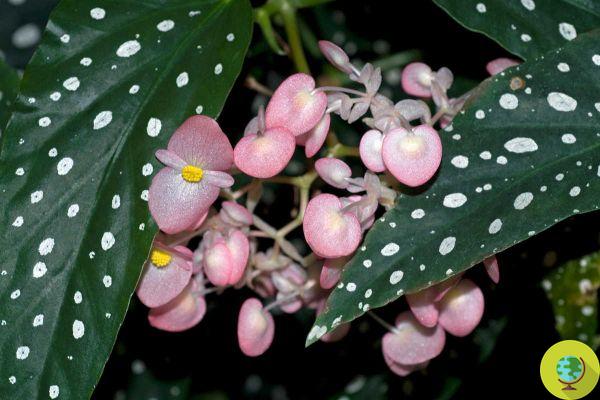
@COULANGES/Shutterstock
With an upright growth habit and segmented stems, bamboo begonia types have beautiful foliage and bloom in a wide range of colors. For example, the spotted begonias, Also called begging with angel's ear for their wing-shaped leaves. They are popular and do well as houseplants, but can also be grown outdoors. Their size varies according to growing conditions, ranging from 45 centimeters for houseplants to XNUMX meters for bushy plants grown in the garden. (also read how to grow spotted begonia)
Rhizomatous begonia (is Begonia Rex)
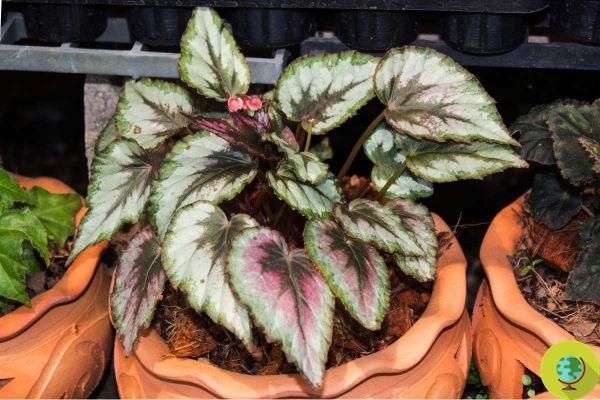
@kaland adam/Shutterstock
The largest class, rhizomatous begonias, are characterized by relatively thick stems, or rhizomes, that grow horizontally near the soil surface and sprout new roots and leaves. Unlike tuberous begonias, which derive from tubers, they propagate by rhizomes and by cuttings. This group of begonias are not particularly famous for their flowers, but for their characteristic and unique leaves, which make them particularly suitable for growing indoors. The size varies from a few centimeters to large plants up to one meter in height and width. A particularly widespread and appreciated subgroup are les begonie Rex, sold by florists and lived all year round.
How to take care of begonia
Le begonie tuberose they will naturally die every year. Begin to decrease the water in late summer and early fall and cut the foliage when it starts to turn yellow. Dig up the tubers at the first threat of frost. Then clean the residual dirt from the tubers and dry them on newspaper in a sunny place for about a week. To prevent powdery mildew, lightly dust them with sulfur powder and store them individually in paper bags or wrapped in newspaper.
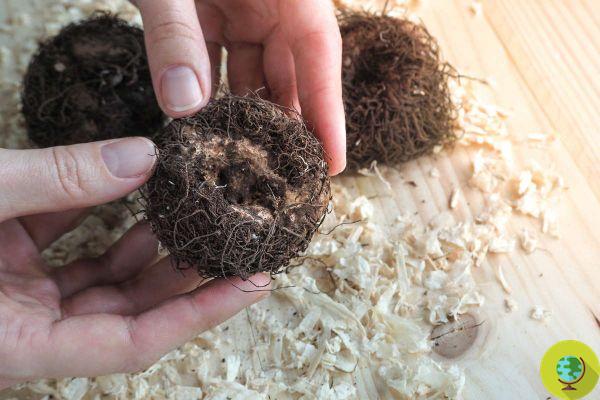
@Stanislav71/Shutterstock
I rhizomatous and waxy types Begonia plants, on the other hand, do not die off and are usually pinched or lightly pruned each year to keep them healthy and encourage full, yet compact growth. In warmer climates, this is best done in the spring. In colder climates, you can also do this in the fall as a cleanup before bringing the plants inside for the winter. In addition to cutting them, check for signs of pests or diseases before moving them inside. To slowly acclimate them to their new internal home, placing them first in a bright window and then gradually decreasing the amount of light. This will help prevent stress, which tends to cause leaves to drop. Once warmer temperatures return, reverse the process and move them outside again.
Soil:
All begonias love evenly moist, well-draining soil with some added organic compost.
Watering: how and when to water begonia
Regular and constant watering is important for keeping plants healthy all year round. The soil should always remain moist, but never too wet, as this could cause it to rot. Water at the base of the plant to keep the foliage dry and prevent leaf spot and fungal diseases.
Diseases and pests:
The begonia plant is particularly susceptible to powdery mildew, mealy bugs, spider mites, thrips, and whiteflies. Stem rot and rhizome rot can be caused by excessively moist and soggy soil that allows fungi to proliferate.
How to grow begonia in the garden
To grow begonia in the garden, prepare a flower bed from moist soil, enriched with compost obtained from vegetable waste. Begonia loves the humid climate that is typical of its country of origin.
Don't forget that begonia is one of the plants that can be grown in the shade. In fact, he loves shady displays. So choose a spot in the garden where your begonia is out of direct sunlight.
You grow begonia starting from a plant purchased in the nursery or thanks to one cutting that you can request from those who already grow this plant. For your begonia, choose a spot in the garden with a cool, humic climate in the summer.
The soil must be free of calcium and must be suitable for plants of tropical origin. The ground must also be rich in humus to promote nourishment and flowering of the plant. You can also grow begonia from seed.
La sowing occurs in spring or autumn. Water your garden begonia every two to three days, more often in summer and when there is no rain.
How to grow begonia in pots
If you don't have a garden, you can grow begonia in pots. If your balcony is not very bright in the sun, you will be happy to know that begonia loves the half-shade position and which is among the plants to be grown on shaded balconies. (Read also: 10 PLANTS FOR A BALCONY AT 0MBRA)
When you buy a begonia seedling in the nursery, immediately choose a pot large enough to transfer it from the jar in which it is sold. In this way he will be able to adapt immediately to a new situation and avoid suffocating in a vase that is too small.
the begonia does not like stagnations in saucers therefore always pay attention to empty them after watering because otherwise the roots could rot until leading to the death of the plant which would risk no longer having water and nourishment available. Let the soil dry between waterings. Water potted begonia every two to three days.
If you are inexperienced in the cultivation of flowers, ask for a suitable soil for begonias, otherwise for your potted begonias choose fresh soil or garden soil to be enriched preferably with compost. For plants grown strictly for their foliage, such as angel wings, use a fertilizer that is richer in nitrogen.
You may also be interested in how to grow:
-
dipladenia
-
the Camellia
-
the Hydrangea
-
And geraniums
-
Wisteria
-
the pink
-
the orchids
-
bougainvillea
-
Chrysanthemums
-
Peony
-
Ornamental lupins
-
sansevier





